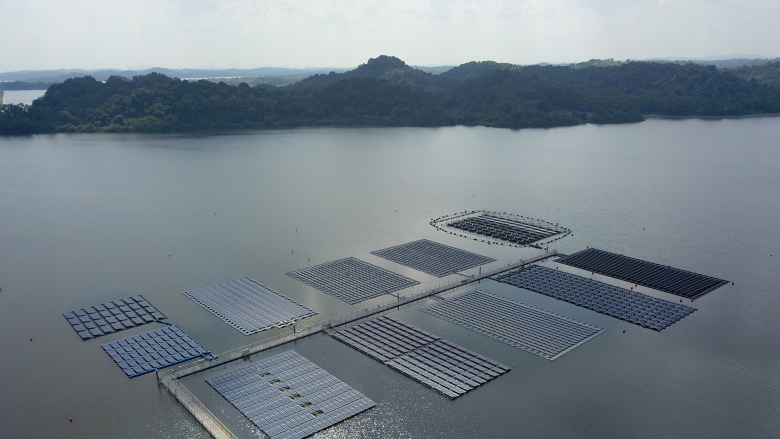As of the end of September, the global cumulative installed capacity of floating PV plants was 1.1 GW, according to the World Bank's Where Sun Meets Water report. That is the milestone ground-mounted PV reached in 2000, the study's authors note.
“If the evolution of land-based PV is any indication, floating solar could advance at least as rapidly, profiting as it does from all the decreases in costs attained by land-based PV deployment,” states the report.
World Bank specialists have outlined three scenarios for the potential growth of floating solar. Under the first, more conservative situation – in which they assume floating PV will occupy only 1% of the world’s man-made, freshwater reservoirs – a potential installed capacity of 400 GW is predicted. Of this, 101 GW would be in Africa, and North America and Europe would account for 126 GW and 20 GW, respectively. The Middle East and Asia would have a 116 GW share, while South America and Australia have the potential to install 36 GW and 5 GW, respectively.
In a second, more favorable scenario – in which the percentage of available surfaces utilized rises to 5% – a potential 2.022 GW is foreseen, with Africa; North America; and the Middle East and Asia still having the lion’s share, with 506 GW, 630 GW, and 578 GW, respectively.
And that's based on current technology…
The best scenario posited by the authors of the study envisages a potential 4.044 GW, which could be reached if 10% of the world's available sites harness floating solar.
The potential peak capacity of the scenarios was calculated using the efficiency levels of current PV modules and the surface area needed for their installation, operation and maintenance. With further technological and cost improvements, the potential of each scenario could be even larger.
The costs of floating PV are still slightly higher than for ground-mounted PV with the additional expense mainly related to the need for floats, moorings and more resilient electrical components, the report notes.
“Total capital expenditures for turnkey floating PV installations in 2018 generally range between $0.80 and $1.20 per Wp, depending on the location of the project, the depth of the water body, variations in that depth, and the size of the system,” the World Bank experts write.
Combine floating PV with hydropower
They stress floating PV projects may be particularly useful at hydropower dams.
“The solar capacity can be used to boost the energy yield of such assets, and may also help to manage periods of low water availability by allowing the hydropower plant to operate in ‘peaking’ rather than ‘baseload’ mode,” the report adds.
The study also notes the potential of near-shore solar technology, while stressing the need to address issues such as more demanding water surface conditions; the need for more critical mooring and anchoring amid large tidal movements and currents; and a requirement for more durable components, due to salinity.
“The priority over the next few years should be to carry out strategic deployments of floating solar at sites where it is already economic,” the report states.
Several emerging solar markets are opening up to floating solar, including Vietnam, Afghanistan, Azerbaijan, and the Kyrgyz Republic, among others.
This content is protected by copyright and may not be reused. If you want to cooperate with us and would like to reuse some of our content, please contact: editors@pv-magazine.com.




3 comments
By submitting this form you agree to pv magazine using your data for the purposes of publishing your comment.
Your personal data will only be disclosed or otherwise transmitted to third parties for the purposes of spam filtering or if this is necessary for technical maintenance of the website. Any other transfer to third parties will not take place unless this is justified on the basis of applicable data protection regulations or if pv magazine is legally obliged to do so.
You may revoke this consent at any time with effect for the future, in which case your personal data will be deleted immediately. Otherwise, your data will be deleted if pv magazine has processed your request or the purpose of data storage is fulfilled.
Further information on data privacy can be found in our Data Protection Policy.